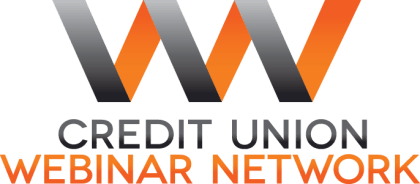
Credit Union Reference Guide: Acronyms A-Z
Credit Union Acronyms A-Z
This guide will help new credit union employees navigate the alphabet soup of banking, enhance their communication skills, and build confidence in their professional interactions. It also serves as a handy refresher for seasoned professionals, helping them stay current with the latest acronyms in the evolving financial industry.
Use it for quick reference to ensure effective communication with colleagues, clients, and regulators, maintaining clarity and professionalism.
A - E
AI - Artificial Intelligence: The simulation of human intelligence in machines. AI systems can perform tasks like recognizing speech, making decisions, solving problems, understanding language, and interpreting visuals. It includes machine learning and robotics techniques to create autonomous systems that improve over time.
ALCO - Asset-Liability Committee: A financial institution management committee responsible for overseeing the financial institution’s assets and liabilities. Its main goal is to manage interest rates, liquidity, and capital risks. The committee ensures a balance between assets and liabilities to maintain financial stability and profitability, making strategic investments, funding, and product pricing decisions.
ALM - Asset Liability Management: A strategic approach financial institutions use to manage the risks that arise from mismatches between the assets and liabilities on their balance sheets. ALM aims to optimize the balance between risk and return by controlling factors such as interest rates, liquidity, and the duration of assets and liabilities. This helps ensure the institution can meet its financial obligations while maximizing profitability.
AML - Anti-Money Laundering: AML encompasses laws, regulations, and procedures to prevent criminals from converting illicit funds into legitimate income. Financial institutions implement AML programs to detect and report suspicious activities, ensuring illicit funds do not enter the legitimate financial system.
AML/KYC - Anti-Money Laundering/Know Your Customer: AML/KYC combines processes for preventing money laundering and verifying member identity. AML involves detecting and reporting suspicious activities, while KYC focuses on verifying members’ identities. Together, these processes help financial institutions prevent illegal activities by understanding and monitoring member transactions.
APY - Annual Percentage Yield: The effective annual rate of return that accounts for the effect of compounding interest over a year. It provides a standardized way to compare the returns of various investment and savings options.
APR - Annual Percentage Rate: The annual rate charged for borrowing or earning through an investment, expressed as a percentage. It includes fees or additional costs associated with the transaction, providing a comprehensive measure of the price or return.
ATM - Automated Teller Machine: An ATM allows members to conduct basic transactions, such as making cash withdrawals, depositing funds, and checking account balances, without needing a branch teller. ATMs provide convenient, 24/7 access to banking services.
BSA - Bank Secrecy Act: The BSA is U.S. legislation that prevents money laundering by requiring financial institutions to keep detailed records and file reports on transactions that may indicate illegal activities. These records and reports help authorities detect and investigate money laundering and other financial crimes.
CAMELS - Capital Adequacy, Asset Quality, Management, Earnings, Liquidity, Sensitivity: A rating system used by regulators to evaluate the health of financial institutions. It assesses six key areas to determine a credit union’s overall condition and ability to manage risks effectively.
CD - Certificate of Deposit: A savings account with a fixed interest rate and a fixed date of withdrawal, known as the maturity date. CD's typically offer A higher interest rate than regular savings accounts in exchange for leaving the money deposited for a specified period.
CECL - Current Expected Credit Loss: A standard for estimating allowances for credit losses on financial instruments over their lifetime. It requires institutions to account for expected losses based on historical, current, and forecasted information.
CET1 - Common Equity Tier 1: Measures a credit union’s core equity capital compared with its total risk-weighted assets. It is a key indicator of a credit union’s financial strength and stability, reflecting its ability to absorb losses.
CFA - Certified Financial Analyst: The CFA Institute offers this professional credential to finance and investment professionals. It signifies expertise in investment analysis, portfolio management, and ethical standards.
CFM - Cash Flow Management: Involves managing the inflow and outflow of cash to ensure a business has adequate liquidity to meet its obligations. Effective cash flow management helps maintain financial stability and operational efficiency.
CFPB - Consumer Financial Protection Bureau: A regulatory agency that oversees financial products and services. It aims to protect consumers by enforcing laws and regulations that ensure fair and transparent financial practices.
CIF - Customer Information File: A CIF contains information about a credit union member. It is used to track transactions and manage relationships. It includes personal details, account information, and transaction history to provide comprehensive member insights.
CIU - Cyber Intelligence Unit: A team within a financial institution dedicated to monitoring, analyzing, and mitigating cyber threats. The CIU focuses on identifying vulnerabilities, preventing cyber-attacks, and protecting digital assets using advanced tools and techniques. It also plays a key role in incident response and safeguarding sensitive data.
CLTV - Combined Loan-to-Value: A financial metric that measures the ratio of all secured loans on a property to the property’s appraised value. It is calculated by dividing the total amount of all loans secured by the property by the property's appraised value. CLTV is used by lenders to assess the risk of a borrower defaulting on their loan, with a higher CLTV indicating a higher risk.
CRA - Community Reinvestment Act: A law designed to incentivize financial institutions to assist in fulfilling the credit requirements of the communities they serve. It promotes fair lending practices and supports economic development in underserved areas.
CTR - Currency Transaction Report: A report filed for transactions over a certain amount to prevent money laundering. Financial institutions must report transactions exceeding $10,000 to the Financial Crimes Enforcement Network (FinCEN).
CUWN – Credit Union Webinar Network: Your first stop for online credit union training on topics affecting everyone at every level of your CU. Find over 250+ live or on-demand webinars.
CVV - Card Verification Value: A security feature for credit and debit card transactions. It is a three- or four-digit code that helps verify the card’s legitimacy and protect against fraud during online or card-not-present transactions.
DDA - Demand Deposit Account: An account where deposited funds can be withdrawn at any time without prior notification to the institution. It offers flexibility for daily transactions, including checks, debit card purchases, and electronic transfers.
DEI - Diversity, Equity, and Inclusion: Encompasses policies and practices that promote the fair treatment and full participation of all people. The goal is to create an inclusive workplace that values diverse perspectives and fosters equal opportunities.
DTI - Debt-to-Income Ratio: A personal finance measure that compares an individual’s monthly debt payment to their monthly gross income. Lenders use it to assess a borrower’s ability to manage monthly payments and repay debts.
EBIDA - Earnings Before Interest, Depreciation, and Amortization: A financial metric used to measure a company’s operating performance. It is calculated by adding interest, depreciation, and amortization back to net income. Unlike EBITDA, EBIDA does not add back taxes, giving a slightly different view of a company’s profitability and cash flow from operations.
EBITDA - Earnings Before Interest, Taxes, Depreciation, and Amortization: A financial metric used to measure a company’s overall financial performance. It is calculated by adding back interest, taxes, depreciation, and amortization to net income. EBITDA is frequently used as an indicator of a company’s profitability and ability to generate cash flow from operations, excluding the effects of financing and accounting decisions.
ECOA - Equal Credit Opportunity Act: A federal law that prohibits discrimination in credit transactions based on race, color, religion, national origin, sex, marital status, age, or receipt of public assistance. It requires creditors to provide reasons for credit denial and promotes fair lending practices.
EEOC - Equal Employment Opportunity Commission: A federal agency in the United States tasked with upholding laws that prohibit discrimination against job applicants or employees based on factors including race, color, religion, sex (including pregnancy, gender identity, and sexual orientation), national origin, age (40 or older), disability, or genetic information. The EEOC investigates complaints of discrimination, mediates disputes, and litigates cases of employment discrimination.
EFT - Electronic Funds Transfer: The electronic transfer of money from one account to another. It includes various transactions such as direct deposits, wire transfers, and online bill payments, providing a fast and secure way to move funds.
EMV - Europay, MasterCard, and Visa: A global standard for credit card security using chip technology. EMV cards contain embedded microchips that store and protect cardholder data, which lowers the risk of fraud and counterfeit transactions.
EPS - Earnings Per Share: A company’s profit divided by outstanding shares of its common stock. It is an important indicator of a company’s profitability. Investors use it to assess financial performance and compare it with other companies.
ERM - Enterprise Risk Management: A comprehensive approach utilized by organizations to identify, assess, prioritize, and mitigate risks across all aspects of their operations. It involves establishing frameworks, processes, and methodologies to systematically manage risks that could impact the achievement of strategic objectives. ERM aims to enhance decision-making by providing a structured way to understand and address risks at all levels of an organization, thereby optimizing the balance between risk and reward.
F - J
FASB - Financial Accounting
Standards Board: An independent, private-sector organization that
establishes financial accounting and reporting standards for public and private
companies and not-for-profit organizations that follow Generally Accepted
Accounting Principles (GAAP) in the United States. The FASB’s mission is to
improve the usefulness of financial reporting by setting standards that provide
clear and consistent information to investors and other users of financial
statements.
FATCA - Foreign Account Tax
Compliance Act: A federal law requiring U.S. taxpayers to report financial
accounts outside the United States. It aims to combat tax evasion by requiring
foreign financial institutions to disclose information about accounts held by
U.S. taxpayers.
FDCPA - Fair Debt Collection
Practices Act: A federal law limiting third-party debt collectors’ behavior
and actions. It prohibits abusive, unfair, or deceptive practices and ensures
debt collectors treat consumers fairly during the collection process.
FDIC - Federal Deposit
Insurance Corporation: A U.S. government corporation that provides deposit
insurance to U.S. commercial banks and depositors of savings institutions. It
protects depositors’ funds in the event of a bank failure and promotes public
confidence in the financial system.
FHA - Federal Housing
Administration: A government agency that provides mortgage insurance on
loans made by FHA-approved lenders. The goal of the FHA is to enhance
accessibility to homeownership by providing insurance for loans that feature
reduced down payment requirements and offer greater flexibility in credit
criteria.
FICO - Fair Isaac Corporation:
A company that creates credit scores used by lenders to evaluate credit risk.
FICO scores span a range of 300 to 850 based on factors like payment history,
credit utilization, and length of credit history.
FIFO - First In, First Out:
An asset management and valuation method in which the first items added to
inventory are the first to be sold. It is commonly used for inventory
accounting to match older costs with current revenues.
FinCEN - Financial Crimes
Enforcement Network: An agency within the U.S. Department of the Treasury
tasked with gathering and examining data on financial transactions to combat
both domestic and international money laundering, terrorist financing, and
various other financial offenses. FinCEN’s mission is to safeguard the
financial system from illicit use and advancing national security by employing
financial authorities strategically and conducting the collection, analysis,
and distribution of financial intelligence.
FFIEC - Federal Financial
Institutions Examination Council: An interagency body that prescribes
uniform principles for financial institutions. It aims to promote consistent
supervision and regulation of financial institutions across different agencies.
FOM - Field of Membership:
This field defines the membership eligibility criteria for a credit union and
specifies the common bond shared by potential members, such as occupation,
geographic location, or membership in an association.
FOMC - Federal Open Market
Committee: A branch of the Federal Reserve that decides the direction of
monetary policy. It sets key interest rates and conducts open market operations
to influence the money supply and achieve economic stability.
FRB - Federal Reserve Board:
The governing body of the Federal Reserve System, overseeing the nation’s
monetary policy. It regulates and supervises banks, conducts research, and
provides financial services to the government and institutions.
FRTB - Fundamental Review of
the Trading Book: A set of rules proposed by Basel III to overhaul the
market risk framework for banking institutions. It aims to improve risk
management and capital adequacy in the trading book by introducing stricter
standards and measures.
FSA - Financial Services
Authority: A regulatory body overseeing financial services. It ensures the
integrity of financial markets, protects consumers, and promotes fair and
transparent practices within the financial industry.
GA4 - Google Analytics 4:
GA4, the latest version of Google Analytics, tracks users across all devices
and platforms. It includes advanced machine learning capabilities to provide
deeper insights into user behavior and predict future actions.
GAAP - Generally Accepted
Accounting Principles: GAAP are standard accounting principles used in the
U.S. They provide guidelines for financial reporting to ensure consistency,
transparency, and comparability of financial statements.
GLBA - Gramm-Leach-Bliley Act:
A law that requires financial institutions to explain their information-sharing
practices to members. It aims to protect consumer privacy by regulating how
financial institutions handle personal information.
G-SIB - Global Systemically
Important Bank: G-SIBs are banks whose failure would significantly affect
the global financial system. These banks are subject to stricter regulatory
requirements to mitigate risks and ensure stability.
HELOC - Home Equity Line of
Credit: A line of credit extended to a homeowner who uses the borrower’s
home as collateral. It allows a homeowner to borrow funds up to a limit, repay
them, and borrow again as needed.
HSA - Health Savings Account:
A tax-advantaged account for individuals who are covered under high-deductible
health plans to save for medical expenses. All contributions, earnings, and
withdrawals for qualified medical expenses are tax-free.
IBA - International Banking
Act: A law regulating foreign banks operating in the United States. It
ensures that foreign banks adhere to the same standards and regulations as
domestic banks, promoting a level playing field.
IBAN - International Bank
Account Number: A standard international numbering system for bank
accounts. It facilitates cross-border transactions by providing a unique
identifier for each account, ensuring accuracy and efficiency.
ICO - Initial Coin Offering:
A type of cryptocurrency funding. Companies raise capital by issuing tokens to
investors, which can be traded or used within the issuing company’s ecosystem.
ICARA - Internal Capital
Adequacy and Risk Assessment: The process by which financial institutions
assess their overall capital adequacy regarding their risk profile. It helps
banks maintain sufficient capital to cover potential losses and remain solvent.
IRA - Individual Retirement
Account: A savings account with tax advantages that individuals use to save
money and invest for retirement. Contributions may be tax-deductible. Earnings
grow tax-deferred until withdrawn.
IRS - Internal Revenue Service:
U.S. government agency that is responsible for tax collection and tax law
enforcement. It administers the federal tax system and ensures compliance with
tax laws through audits and investigations.
K - O
KPI - Key Performance Indicator:
A measurable value demonstrating how effectively a company achieves key
business objectives. KPIs help organizations track progress, identify areas for
improvement, and make informed decisions.
KYC - Know Your Customer:
Financial institutions use the KYC process to verify the identity of their
clients and assess potential risks. These processes involve collecting and
verifying personal information to ensure compliance with regulations and
prevent illegal activities.
LCR - Liquidity Coverage Ratio:
A requirement under Basel III to ensure financial institutions maintain an
adequate level of high-quality liquid assets. It helps financial institutions
meet short-term obligations and avoid liquidity crises.
LCU - Low-Income Credit Union:
A credit union that primarily serves low-income members. Designation by the
NCUA allows access to benefits like grants and secondary capital.
LIBOR - London Interbank
Offered Rate: LIBOR was a benchmark interest rate at which central global
banks lend to one another in the international interbank market. It was widely
used as a reference rate for various financial instruments. According to www.newyorkfed.org, June 30,
2023, marked the cessation of all USD LIBOR panel settings - the final major
step in the transition. Today, SOFR is the dominant U.S. dollar interest rate
benchmark.
LIFO - Last In, First Out:
An asset management and valuation method in which the last items added to
inventory are the first to be sold. It is often used for accounting purposes to
match recent costs with current revenues.
LOC - Line of Credit: A
credit facility extended by a financial institution to a government, business,
or individual member. It enables the member to draw on the facility when
needed, up to a specified limit.
LTV - Loan to Value: A
ratio that expresses the loan amount as a percentage of the property’s
appraised value. Lenders use LTV to assess the risk of lending and determine
loan terms.
MICR - Magnetic Ink Character
Recognition: A technology employed to authenticate the validity or
authenticity of physical documents, particularly checks. It uses magnetic ink
and characters to facilitate automated processing and reduce fraud.
MMDA - Money Market Deposit
Account: A type of savings account that typically pays a higher interest
rate than a regular one. It provides the account holder with limited
check-writing ability and access to funds.
MRBs - Marijuana-Related
Businesses: Businesses involved in the growth, distribution, and sale of
marijuana. Due to varying state and federal laws, they operate within a complex
regulatory environment.
NACHA - National Automated
Clearing House Association: An organization that oversees the ACH network.
It develops rules and standards for electronic payments and ensures the
efficient and secure transfer of funds.
NCUA - National Credit Union
Administration: A U.S. government agency that regulates and supervises
credit unions. It provides deposit insurance to protect members’ funds and
promotes the safety and soundness of the credit union system.
NDA - Non-Disclosure Agreement:
A legal contract between at two or more parties that outlines confidential
material or information that the parties wish to share but restricts access to
third parties. It helps protect sensitive information from being disclosed.
NFC - Near Field Communication:
A set of communication protocols that enable two electronic devices to
communicate with each other within a few centimeters of proximity. It is
commonly used for contactless payments and data exchange.
NINJA - No Income, No Job, and
No Assets: A type of loan extended to a borrower with no ability to pay.
Due to their lack of stringent qualification requirements, these high-risk
loans contributed to the financial crisis.
NPI - Nonpublic Personal
Information: Information that a consumer provides to a financial
institution that is not publicly available. It includes personal details such
as Social Security numbers, account balances, and transaction history and
requires protection and confidentiality.
NPS - Net Promoter Score: A
metric used in member experience programs to measure member loyalty to a
company. It is calculated based on responses to a question about the likelihood
of recommending the company to others.
NSF - Non-Sufficient Funds:
A term used when an account does not have enough money to cover a transaction.
Financial institutions typically charge a fee for NSF occurrences, and the
transaction is declined.
NSFR - Net Stable Funding Ratio:
A requirement under Basel III that ensures financial institutions have a stable
funding profile in relation to their on- and off-balance sheet activities. It
promotes long-term funding stability and reduces reliance on short-term
borrowing.
OCC - Office of the Comptroller
of the Currency: A U.S. Department of the Treasury bureau that regulates
and supervises national banks and federal savings associations. It ensures that
these institutions operate safely and soundly and comply with applicable laws
and regulations.
OIS - Overnight Index Swap:
A type of interest rate swap. It involves the exchange of a fixed interest rate
for a floating rate, usually tied to an overnight index, helping parties manage
interest rate risk.
OFAC - Office of Foreign Assets
Control: A financial intelligence and enforcement agency of the U.S.
Treasury Department. It administers and enforces economic and trade sanctions
based on U.S. foreign policy and national security goals.
P - T
PCA - Prompt Corrective Action:
A framework established by the NCUA to ensure credit unions maintain adequate
capital levels. It includes mandatory and discretionary actions that the NCUA
can take to resolve issues in undercapitalized credit unions.
PCI - Payment Card Industry:
Major credit card companies set PCI standards to help businesses protect credit
card information and reduce fraud. Compliance with PCI standards is mandatory
for organizations handling credit card transactions.
PIN - Personal Identification
Number: A PIN is a numeric password used to authenticate a user to a
system. It is commonly used with credit and debit cards for secure
transactions.
PITI - Principal, Interest,
Taxes, Insurance: PITI represents the components of a monthly mortgage
payment. It includes the loan principal, interest, property taxes, and
homeowners insurance, providing a comprehensive view of housing costs.
POS - Point of Sale: Where
a transaction occurs, such as a checkout counter. POS systems facilitate sales,
process payments, and manage inventory, streamlining retail operations.
PPP - Paycheck Protection
Program: A loan program established by the U.S. federal government to help
businesses keep their workforce employed during the COVID-19 crisis. It
provides forgivable loans to cover payroll and other essential expenses.
PPP - Public-Private
Partnership: A cooperative arrangement between one or more public and
private sectors, typically of a long-term nature. It combines the strengths of
both sectors to deliver public services or infrastructure projects.
PR - Prime Rate: The
interest rate that financial institutions charge their most creditworthy
members. It is often used as a benchmark for various lending rates, including
credit cards and loans.
PSD2 - Payment Services
Directive 2: An EU regulation for electronic payment services. It aims to
increase competition, innovation, and security in the payment industry by
requiring stronger member authentication and opening access to payment
accounts.
PSR - Payments System Risk:
The risk associated with payment systems. It includes credit, liquidity,
operational, and legal risks that could affect their smooth functioning and
financial stability.
QDIA - Qualified Default
Investment Alternative: A QDIA is a default investment option for
retirement plans. It provides a safe harbor for plan sponsors by ensuring
participants are automatically invested in a diversified portfolio if they do
not make an investment choice.
QRM - Qualified Residential
Mortgage: A home loan class that meets specific regulatory standards. These
standards are designed to ensure borrowers’ strong ability to repay, promote
safer lending practices, and reduce the risk of default.
RBC - Risk-Based Capital:
Measures the minimum capital appropriate for a financial institution. It
considers the riskiness of the institution’s assets and activities, ensuring
sufficient capital to absorb potential losses.
RD - Recurring Deposit: A
RD is a unique term deposit offered by financial institutions that allows
people with regular incomes to deposit a fixed amount every month into their RD
account. It earns interest at a rate applicable to term deposits, encouraging
systematic savings.
RDC - Remote Deposit Capture:
A service that allows a member to scan checks and transmit scanned images to a
financial institution for posting and clearing. It offers convenience and
faster access to funds by eliminating the need to visit a physical location.
REIT - Real Estate Investment
Trust: A company that owns, operates, or finances income-producing real
estate. It allows investors to pool their capital to invest in a diversified
portfolio of real estate assets, often providing regular income through
dividends.
RESPA - Real Estate Settlement
Procedures Act: A federal law designed to protect homebuyers by requiring
lenders, mortgage brokers, and servicers of home loans to provide borrowers
with pertinent and timely disclosures about the nature and costs of the real
estate settlement process. It also prohibits certain practices, such as
kickbacks and referral fees, that can increase the cost of settlement services.
ROI - Return on Investment:
Measures an investment’s profitability. It is calculated by dividing the net
profit by the initial investment cost, expressed as a percentage. It indicates
how effectively an investment generates profits.
ROA - Return on Assets:
Measures how profitable a company is relative to its total assets. It is
calculated by dividing net income by total assets, showing how efficiently a
company utilizes its assets to generate earnings.
ROE - Return on Equity:
Measures a company’s financial performance by dividing net income by
shareholders’ equity. It indicates how effectively a company uses equity
investments to generate profits, providing insight into management’s
efficiency.
RPA - Robotic Process
Automation: A technology that automates routine tasks. It uses software
robots to perform repetitive and rule-based processes, improving efficiency,
accuracy, and productivity while reducing costs.
RTP - Real-Time Payments:
An instant payment system that enables immediate money transfers between
accounts. It offers 24/7 availability and instant confirmation, enhancing
convenience and speed for consumers and businesses.
RWA - Risk-Weighted Assets:
Measures the minimum amount of capital financial institutions must hold by
considering the riskiness of their assets. It helps financial institutions
maintain enough capital to absorb potential losses and remain solvent.
SAR - Suspicious Activity
Report: A document that financial institutions must file with the Financial
Crimes Enforcement Network (FinCEN) when they suspect that certain transactions
could be related to illegal activities. It helps authorities detect and
investigate money laundering and other financial crimes.
SBA - Small Business
Administration: A U.S. government agency that supports entrepreneurs and
small businesses. It offers loans, loan guarantees, contracts, counseling
sessions, and other forms of assistance to help businesses start, grow, and
succeed.
SDN - Specially Designated
Nationals: OFAC blocks SDNs, individuals and companies. Their assets are
frozen, and U.S. persons are generally prohibited from dealing with them due to
their involvement in terrorism, narcotics trafficking, or other illegal
activities.
SEC - Securities and Exchange
Commission: A U.S. government agency that regulates securities markets. It
aims to protect investors, maintain fair and efficient markets, and facilitate
capital formation by enforcing securities laws and promoting transparency.
SIFI - Systemically Important
Financial Institution: Institutions whose failure could trigger a financial
crisis. They are subject to enhanced regulatory scrutiny and higher capital
requirements to mitigate risks and ensure economic stability.
SOFR - Secured Overnight
Financing Rate: A benchmark interest rate for dollar-denominated
derivatives and loans. It is based on overnight transactions in the U.S.
Treasury repurchase market. It offers a transparent and reliable measure of
borrowing costs.
SRT - Significant Risk Transfer:
A regulatory framework determining whether financial institutions can achieve
capital relief through securitization. It assesses the extent to which risk has
been transferred to third parties, ensuring that financial institutions hold
adequate capital for retained risks.
SWIFT - Society for Worldwide
Interbank Financial Telecommunication: SWIFT is a network enabling
financial institutions to send and receive information about financial
transactions. It provides secure, standardized communication for international
payments and settlements.
SWIFT Code - Society for
Worldwide Interbank Financial Telecommunication Code: A standard format of
Business Identifier Codes (BIC) approved by the International Organization for
Standardization (ISO). It uniquely identifies financial institutions globally,
facilitating international wire transfers.
T&E - Travel and
Entertainment: Expenses that are incurred by employees or companies for
business-related travel and entertainment. These expenses typically include
transportation, accommodation, meals, and other costs associated with
conducting business away from the primary workplace.
TARP - Troubled Asset Relief
Program: The United States government’s program to purchase toxic assets
and equity from financial institutions to strengthen its financial sector was
created in response to the economic crisis of 2007-2008 to stabilize the
economy and restore confidence in the financial system.
TCF - Treating Customers Fairly:
It is a regulatory initiative aimed at ensuring that financial institutions and
intermediaries put the interests of their members at the heart of their
business. The TCF initiative seeks to improve the culture of financial services
firms so that they consistently deliver fair outcomes to consumers. It
emphasizes the need for transparency, fairness, and clarity in financial
transactions and services.
TIN - Taxpayer Identification
Number: The IRS assigns a TIN for tax purposes in the United States. It is
required to file tax returns and other IRS documents, identify taxpayers, and
process tax-related transactions.
TLAC - Total Loss-Absorbing
Capacity: TLAC requirements ensure financial institutions have sufficient
capital to absorb losses. They include equity and debt instruments that can
recapitalize a financial institution in distress, enhancing its resilience and
reducing the likelihood of taxpayer bailouts.
TLTRO - Targeted Long-Term
Refinancing Operations: A policy tool financial institutions use to provide
long-term loans to financial institutions at attractive conditions. They aim to
enhance credit creation in the private sector by encouraging financial
institutions to lend to businesses and households.
TILA - Truth in Lending Act:
A federal law enacted to promote the informed use of consumer credit by
requiring disclosures about its terms and costs. It ensures consumers receive
clear and accurate information about the actual cost of credit, helping them
compare and make better credit decisions.
TMS - Treasury Management
System: Software for managing an organization’s financial operations. It
helps companies manage liquidity, cash flow, investments, and risk, optimizing
the use of economic resources and improving financial efficiency.
TRID - TILA-RESPA Integrated
Disclosure: A regulation by the Consumer Financial Protection Bureau (CFPB)
that merges the disclosure requirements of the Truth in Lending Act (TILA) and
the Real Estate Settlement Procedures Act (RESPA). TRID simplifies the mortgage
process by using two forms: the Loan Estimate and the Closing Disclosure. The
Loan Estimate outlines key loan terms and costs, while the Closing Disclosure
details the final loan terms and costs.
U - Z
UBI - Unrelated Business Income:
Income generated by a credit union from activities not substantially related to
its tax-exempt purpose. Such income may be subject to unrelated business income
tax (UBIT).
UBIT - Unrelated Business
Income Tax: A tax on income generated by tax-exempt organizations from
activities not directly related to their primary mission. For credit unions,
this means income from unrelated business activities is subject to taxation,
ensuring a level playing field with for-profit entities.
UBPR - Uniform Bank Performance
Report: A report provided by the Federal Financial Institutions Examination
Council (FFIEC) that shows individual financial institutions’ performance and
risk profile. It helps regulators, analysts, and bankers assess and compare a
bank’s financial health with peers.
UDAAP - Unfair, Deceptive, or
Abusive Acts or Practices: Refers to unfair, deceptive, or abusive
practices in consumer finance. The Dodd-Frank Act prohibits these practices to
protect consumers from financial harm and ensure fair treatment.
USDA - United States Department
of Agriculture: The U.S. federal executive department responsible for
developing and executing federal laws related to farming, forestry, rural
economic development, and food. It aims to support farmers, promote
agricultural trade, ensure food safety, and improve rural communities.
VA - Veterans Affairs: The
government-run military veteran benefit system with Cabinet-level status. It
provides comprehensive healthcare, benefits, and support services to U.S.
military veterans and their families.
VAR - Value at Risk: A
statistical technique used to measure the risk of loss. It estimates the
maximum potential loss over a specific period with a given confidence level,
helping financial institutions manage risk and make informed investment
decisions.
VC - Venture Capital: A
form of private equity and financing investors provide to startups and small
businesses. It supports early-stage companies with high growth potential,
typically in exchange for equity ownership.
VISA - Visa International
Service Association: A global payments technology company that facilitates
electronic funds transfers worldwide, primarily through credit, debit, and
prepaid cards. It connects consumers, businesses, financial institutions, and
governments.
W-2 - Wage and Tax Statement:
An IRS form used to report wages paid to employees and the taxes withheld.
Employers provide it to employees and the IRS annually, summarizing earnings
and tax information for the year.
W-8 - Certificate of Foreign
Status of Beneficial Owner for United States Tax Withholding: An IRS form
used by foreign individuals and entities to certify their status. It exempts
them from specific U.S. tax withholding requirements on income from U.S.
sources.
W-9 - Request for Taxpayer
Identification Number and Certification: A form used in the United States
to request a taxpayer identification number and certification. Businesses
typically use it to collect tax identification information from contractors,
vendors, and other entities for tax reporting purposes.
WACC - Weighted Average Cost of
Capital: A calculation of a firm’s cost of capital in which each category
of capital is proportionately weighted. It represents the average rate of
return a company is expected to pay its security holders, providing insight
into its financial health and investment potential.
XBRL - eXtensible Business
Reporting Language: A standard for exchanging business information. It
enables the efficient, accurate, and automated exchange of financial data
across different systems and organizations, enhancing transparency and
comparability in financial reporting.
YTM - Yield to Maturity:
The return expected on a bond if held until it matures. It accounts for the
bond’s current market price, coupon interest rate, par value and time to
maturity, offering a comprehensive measure of its profitability.
ZBA - Zero Balance Account:
A checking account that maintains a zero balance by automatically transferring
funds from a master account in an amount large enough to cover the checks
presented. It helps organizations manage cash flow efficiently and reduce idle
balances.
0 - 10
401(k) - A retirement savings plan: Many employers in the United States offer a retirement
savings plan. 403(k)s allow employees to save and invest a portion of their
paycheck before taxes are taken out. The employer often matches contributions,
and the money grows tax-deferred until retirement.
Disclaimer
Read These Articles Next
Tess Bower
April 6, 2022
Tess Bower
September 30, 2021
January 19, 2022
© 2025 FINANCIAL EDUCATION & DEVELOPMENT, INC






